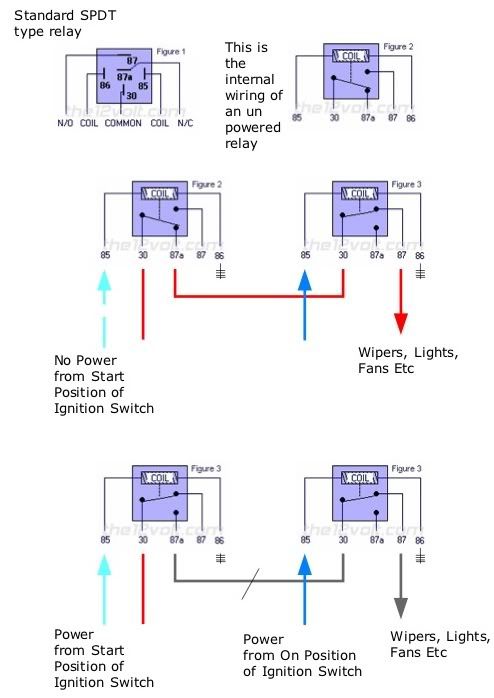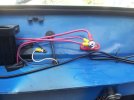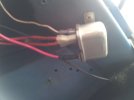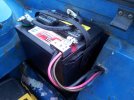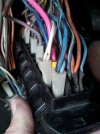I was thinking about rlingren's recent tale of woe involving a burned ignition switch... and the pain that a burned ignition switch wire causes me... and I find myself wondering whether there's a better way.
There's a blue-black wire from the ignition switch to the fusebox that carries all of the switched power for accessories - lights, wipers, instruments, and so forth. Suppose I were to disconnect the blue-black wire at the fusebox, use it to control a relay instead? Then I could run a suitable heavy wire from the battery to that relay, and thence to the fusebox - and the ignition switch would never have to carry more than the tiny current needed to activate the relay.
Anyone ever tried something like this? Any reason why it shouldn't work?
The '74 already has a relay for the starter circuit; it's controlled by the seatbelt interlock thingummie by the glovebox. Both input terminals of the relay are powered from the ignition switch though, so the full current draw of the solenoid still comes through the ignition switch. It would be easy enough to change that as well: run one more wire direct from the battery to the relay's switched input in place of the wire from the ignition switch, leave the ignition switch controlling the relay.
There's a blue-black wire from the ignition switch to the fusebox that carries all of the switched power for accessories - lights, wipers, instruments, and so forth. Suppose I were to disconnect the blue-black wire at the fusebox, use it to control a relay instead? Then I could run a suitable heavy wire from the battery to that relay, and thence to the fusebox - and the ignition switch would never have to carry more than the tiny current needed to activate the relay.
Anyone ever tried something like this? Any reason why it shouldn't work?
The '74 already has a relay for the starter circuit; it's controlled by the seatbelt interlock thingummie by the glovebox. Both input terminals of the relay are powered from the ignition switch though, so the full current draw of the solenoid still comes through the ignition switch. It would be easy enough to change that as well: run one more wire direct from the battery to the relay's switched input in place of the wire from the ignition switch, leave the ignition switch controlling the relay.

